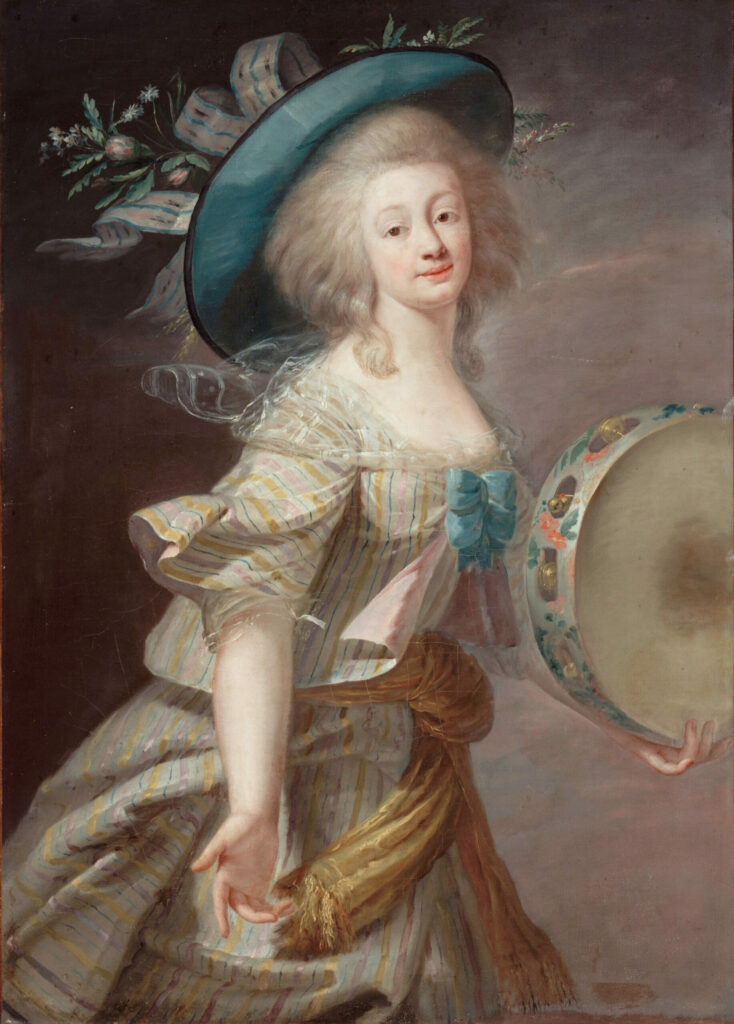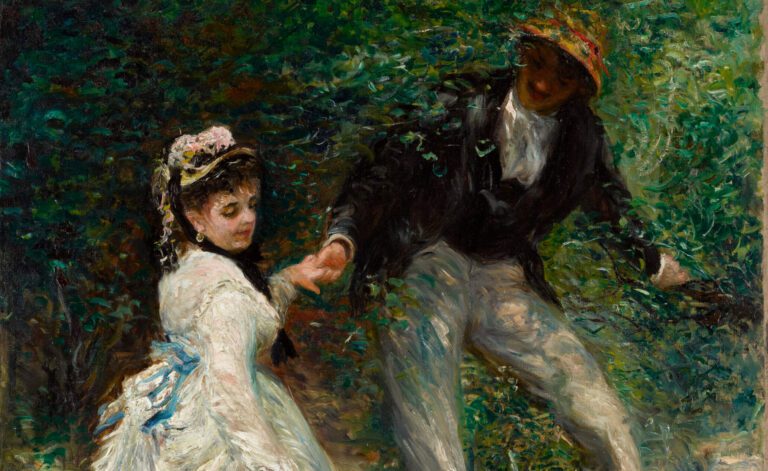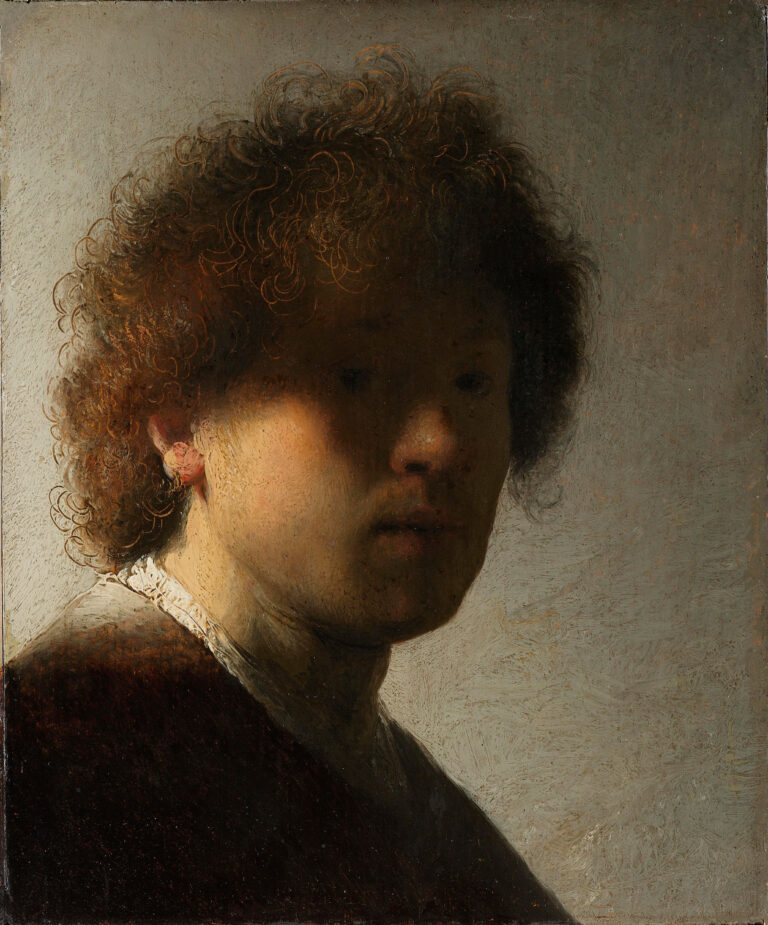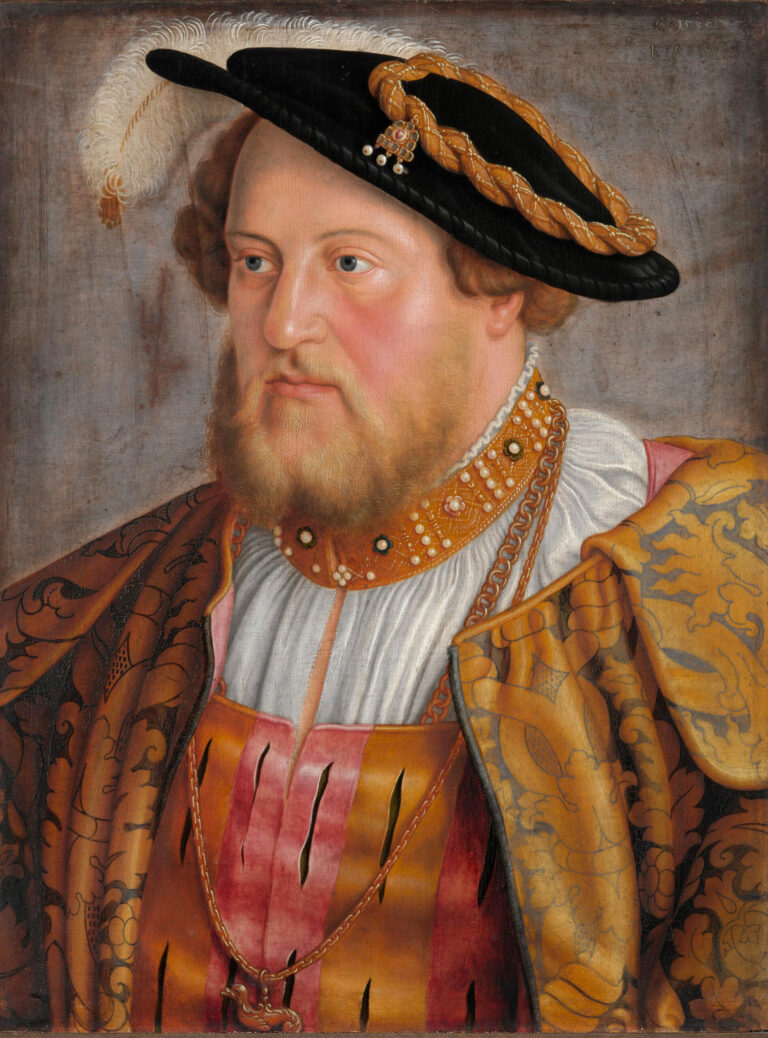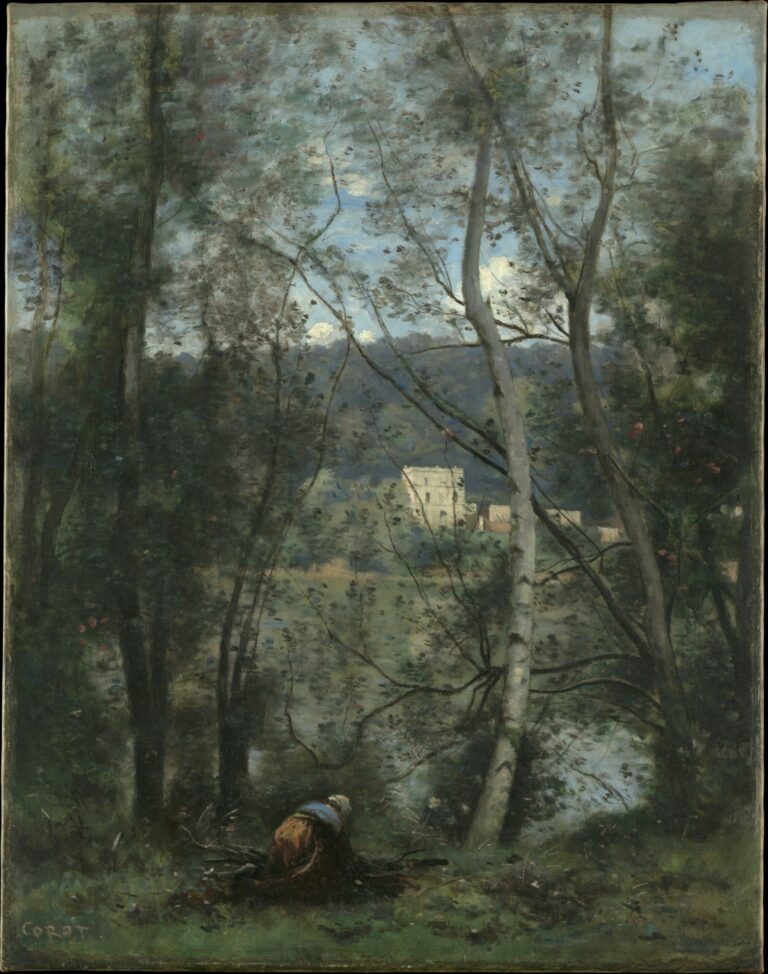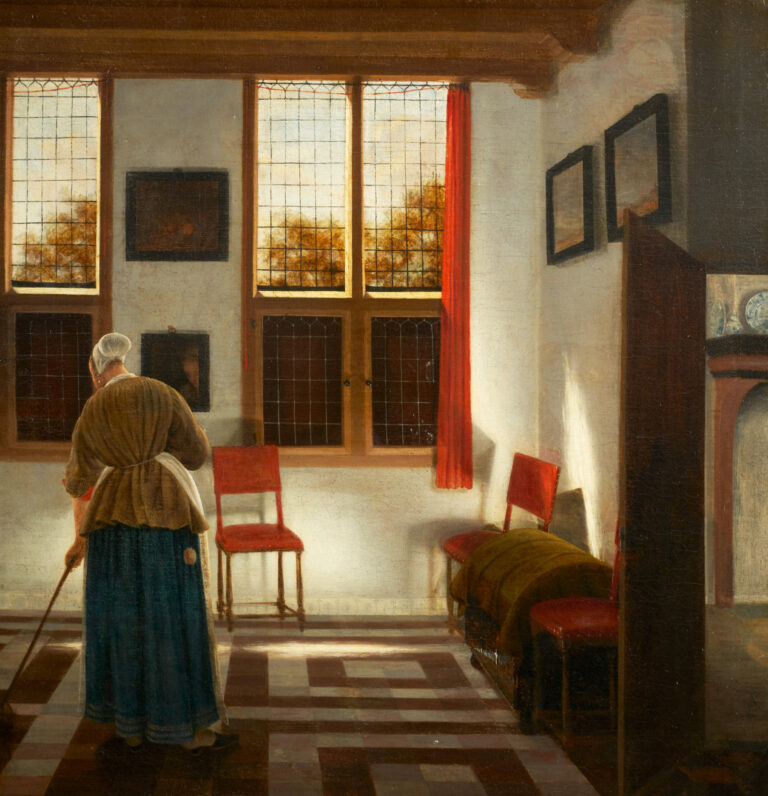This vibrant portrait by Elisabeth Vigée-Lebrun masterfully captures the essence of a young woman’s movement, frozen in a moment of suspended grace.
Her delicately striped pastel dress ripples with energy, infusing the composition with dynamism and lightness. The turquoise hat, adorned with ribbons and flowers, crowns this apparition with an elegance characteristic of 1780s Parisian fashion. The tambourine held with delicacy evokes music that seems to resonate beyond the frame, while the subject’s gaze, filled with gentle confidence, establishes an intimate dialogue with the viewer. The color palette, dominated by pastel tones heightened with touches of azure and gold, bathes the work in an atmosphere of refinement. This painting embodies the aesthetic of late Rococo portraiture while heralding the beginnings of Neoclassicism.
Further Information
- Portrait of a Young Dancer by Elisabeth Vigée-Lebrun, c. 1780-1789
- 105 × 75 cm
- Paris Musées, Musée Cognacq-Jay, le goût du XVIIIe
- https://www.parismuseescollections.paris.fr/fr/musee-cognacq-jay/oeuvres/portrait-d-une-danseuse
Elisabeth Vigée-Lebrun (1755-1842) established herself as one of the most eminent portraitists of her time, breaking conventions in a male-dominated world. Trained by her father, the pastel artist Louis Vigée, she developed a prodigious talent at an early age that earned her admission to the Royal Academy in 1783, under the patronage of Marie-Antoinette, whose official portraitist she became.
Her ability to capture the psychology of her subjects with finesse makes her portraits valuable testimonies of French aristocracy on the eve of the Revolution. Forced into exile in 1789, she pursued a brilliant career across Europe before returning to France during the Empire. Her work bears witness to a luminous perspective on her era and a modernity that transcends pictorial conventions.

